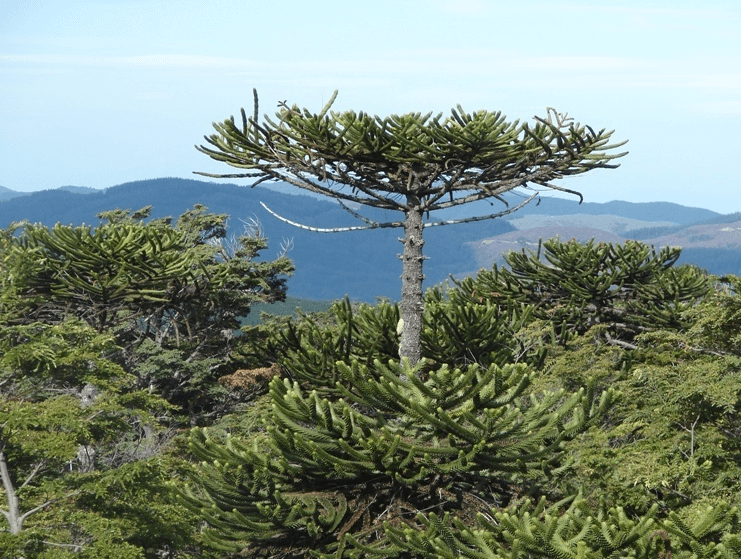Chile, a land of diverse landscapes and natural wonders, is known for its rich biodiversity. Among the many treasures that Chile boasts, the Chile National Tree, Araucaria, stands tall as a symbol of national pride. With its unique appearance and cultural significance, the Araucaria captures the essence of Chile's natural heritage. In this article, we will explore the fascinating world of Araucaria, delve into its historical and cultural significance, examine its physical characteristics, discuss conservation efforts, explore its uses, and shed light on the ecotourism opportunities it offers.
History and Cultural Significance of Chile National Tree
The Araucaria tree, scientifically known as Araucaria araucana, holds a special place in Chilean culture. It has been revered for centuries by the indigenous Mapuche people, who consider it a sacred tree. The Mapuche regard the Araucaria as a symbol of wisdom, strength, and resilience, and it plays an integral role in their folklore and spiritual practices.
Physical Characteristics
The Araucaria is an evergreen coniferous tree with a distinctive appearance. Its branches form a characteristic umbrella-like shape, with thick, leathery leaves arranged in spirals. The tree can reach impressive heights of up to 50 meters, and its bark is thick and rough, providing protection against the harsh elements.
Chile National Tree: Conservation
Threats and Challenges
Despite its cultural significance and ecological importance, Araucaria trees face numerous threats. Deforestation, habitat loss, and illegal logging pose significant challenges to their survival. Climate change and forest fires further exacerbate the threats, endangering the future of these magnificent trees.
Conservation Efforts
Recognizing the urgency of preserving Araucaria, Chile has implemented various conservation initiatives. These efforts involve establishing protected areas, promoting sustainable logging practices, and raising awareness about the importance of preserving the Araucaria's habitat. Collaborative efforts between local communities, scientists, and government organizations aim to ensure the long-term survival of this iconic national tree.
Uses of Chile National Tree
Culinary Delights
Araucaria seeds, known as piñones, are a culinary delight in Chile. They are a traditional ingredient in many dishes, lending a unique flavor and texture to Chilean cuisine. From hearty stews to mouthwatering desserts, piñones are cherished by locals and sought after by tourists for their distinct taste.
Traditional Medicine
The Mapuche people have utilized various parts of the Araucaria tree for medicinal purposes for centuries. The resin, bark, and leaves of the tree contain compounds with potential healing properties. Traditional medicine practitioners believe that Araucaria-based remedies can treat digestive issues, respiratory ailments, and even provide relief from pain.
Wood and Timber
Araucaria wood, with its exceptional durability and attractive grain patterns, is highly valued in the timber industry. It is used for crafting furniture, flooring, and other decorative items. However, sustainable logging practices must be implemented to ensure the responsible use of Araucaria wood and prevent further damage to its population.
Ecotourism and Chile National Tree
Araucaria Forests
The magnificent Araucaria forests in Chile offer a captivating experience for nature enthusiasts and ecotourists alike. These ancient forests, with their towering trees and diverse flora and fauna, provide a unique opportunity to immerse oneself in Chile's natural wonders. Exploring the trails and marveling at the grandeur of these forests is a memorable adventure.
Hiking and Adventure
Chile's Araucaria forests also serve as a playground for outdoor enthusiasts. Hiking trails, such as the famous Araucaria Trail, allow visitors to traverse the awe-inspiring landscapes, soak in breathtaking views, and get up close with these majestic trees. For those seeking an adrenaline rush, activities like rock climbing and zip-lining amidst the Araucaria forests provide an unforgettable adventure.
Conclusion
Araucaria, the national tree of Chile, is a botanical marvel that embodies the country's natural beauty and cultural heritage. From its historical significance to its physical characteristics, the Araucaria captivates the imagination. However, with conservation challenges and the need for sustainable practices, it is crucial to protect these remarkable trees for future generations. Through conservation efforts and responsible tourism, we can ensure that Araucaria continues to thrive and inspire awe.
FAQs
1. Are Araucaria trees only found in Chile?
No, Araucaria trees can also be found in other countries, such as Argentina and Brazil. However, they hold great cultural and national significance in Chile.
2. Can I plant an Araucaria tree in my backyard?
While it may be possible to grow Araucaria trees in certain regions with suitable climates, they require specific conditions to thrive. It's essential to consult with local experts and consider the tree's long-term needs before planting one.
3. Are Araucaria seeds edible for everyone?
Although Araucaria seeds, or piñones, are generally safe to eat, some individuals may have allergies or sensitivities. It's always recommended to exercise caution and seek medical advice if you have any concerns.
4. Can I purchase Araucaria wood products sustainably?
Yes, it is possible to find Araucaria wood products that have been sourced sustainably. Look for certifications such as the Forest Stewardship Council (FSC) to ensure responsible logging practices.
5. What other attractions can I visit in Chile besides Araucaria forests?
Chile offers a multitude of attractions, from the otherworldly landscapes of the Atacama Desert to the awe-inspiring beauty of Patagonia. Exploring vibrant cities like Santiago and Valparaiso or visiting pristine national parks such as Torres del Paine are also highly recommended.
References:
- Conaf. (n.d.). Araucaria araucana. Retrieved from http://www.conaf.cl/english/conservation/forest-conservation-unit/species-of-interest/araucaria-araucana/
- Gobierno de Chile. (n.d.). Araucaria araucana. Retrieved from https://www.gob.cl/en/news/araucaria-araucana-2/
- Patagonia. (n.d.). Araucaria Tree. Retrieved from https://www.patagonia.com/blog/2015/03/araucaria-tree/
